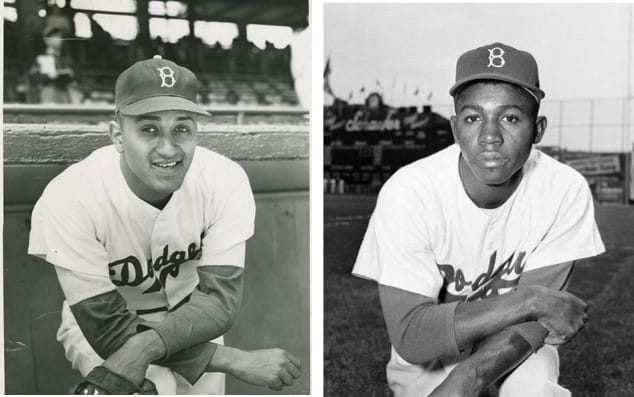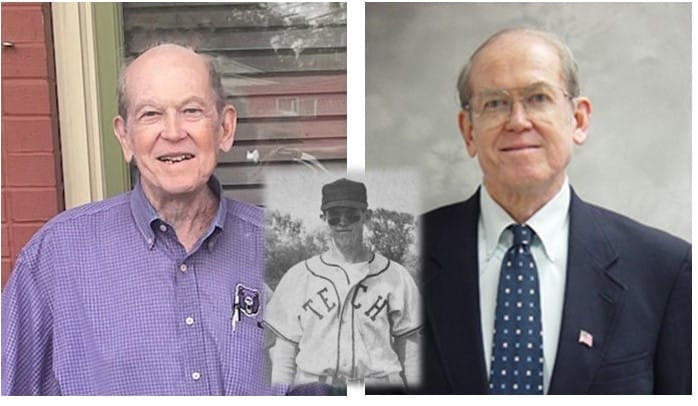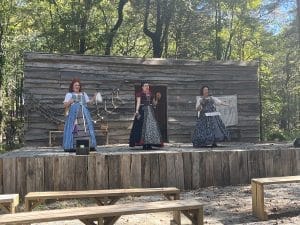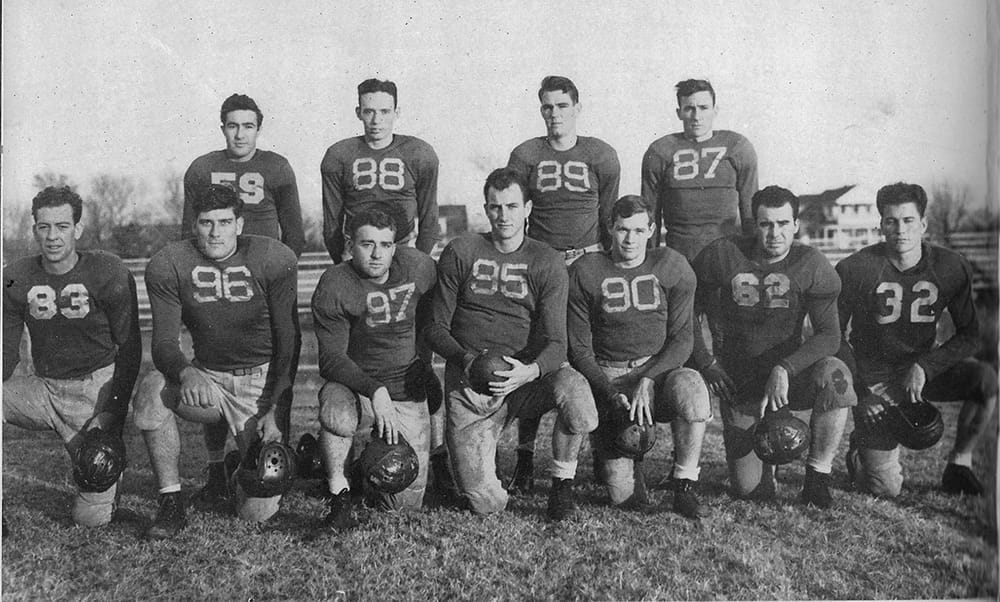

Uh oh...
It appears that you're using a severely outdated version of Safari on Windows. Many features won't work correctly, and functionality can't be guaranteed. Please try viewing this website in Edge, Mozilla, Chrome, or another modern browser. Sorry for any inconvenience this may have caused!
Read More about this safari issue.

The 2024 regular baseball season has just ended, but if you had a chance to attend a once-in-a-lifetime baseball game in Little Rock this month, would you go? What if the game featured the best player in major league baseball, an outfielder who became the first player to break Babe Ruth’s all-time home run record, and a young shortstop who would be named to the All-20th-Century team? Admission will only be $1.50 for the best seats in the ballpark!
That attractive scenario was a reality in October of 1955, but less than 3,000 fans attended a historic exhibition game that has become a forgotten event in Arkansas baseball history.
By Monday, October 10, with the recently completed World Series marking the end of baseball for 1955, Arkansas newspapers had turned their attention to football. The Dodgers had finally beaten the Yankees in the World Series the previous week, but it was “Beat Texas Week.” Baseball stories had lost their sports page prominence.

Nineteen-fifty-five had been an interesting season for Arkansas baseball fans. The Cardinals had managed to finish sixth in the National League despite having Stan Musial and Bay, Arkansas’ Wally Moon, the National League Rookie of the Year. Hometown hero Brooks Robinson had been promoted to the Baltimore, Orioles in September, three months and one minor league season after his graduation from Little Rock High School, and Arkansas favorite son, Dizzy Dean, did the play-by-play on the “Game of the Week” for those fortunate enough to have television.
On the first page of the October 10, 1955, edition of the Arkansas Gazette Sports section, most of the headlines were reserved for the Arkansas Razorbacks vs. Texas Longhorns game in Little Rock the upcoming weekend. Eighteen pages deep, just below the Joe Palooka comic strip, there was a short article about the baseball game that night at Travelers Field.

In hindsight, that Monday evening in October offered a once-in-a-lifetime opportunity to see many of the most celebrated baseball stars of the 20th century. They called it “barnstorming.” In a situation unimaginable today, major league baseball players needed to supplement their summer salary with some off-season income. Creating traveling teams to tour parts of the country without big-league baseball seemed better than finding a job. Babe Ruth and Lou Gehrig did it, and Dizzy and Daffy joined Satchel Paige for several successful fall tours.
When the Brooklyn Dodgers beat the Yankees in the World Series that ended on October 4, the Yanks, who never expected to lose, already had their victory tour scheduled. The players and team personnel could take guests on a 25-game tour of Japan and a weekend holiday in London. The World Champion Dodgers had no plans.

Dodgers ace pitcher Don Newcombe had an idea for a unique barnstorming team. He recruited his teammate Jim Gilliam and cross-town rival Willie Mays for a touring African-American All-Star team. Mays had been the MVP of the 1954 season and hit 51 home runs in 1955. The team would at various times, be called the Newcombe All-Stars, the Mays All-Stars, and the Newcombe-Mays All-Stars.
It’s quite possible that the 1955 Mays-Newcombe All-Stars might be the best baseball team ever assembled — and the best team you’ve never heard of. —Alex Coffey The Athletic 2020
The two “captains” were joined by Future Hall of Famers, Ernie Banks, Hank Aaron, and Monte Irvin. The 24-year-old Banks had hit 44 home runs in 1955, and his infectious love of the game had made him a favorite in every ballpark in America. Aaron was a skinny 21-year-old with amazing power for his size. His salary was about $10,000 a season, and he could use the extra income. Irvin was a late arrival in the big leagues, having spent some of the best years of his career in the Negro Leagues. He, too, needed an off-season income.

The superstars were joined by other African American stars from various major league teams. The All-Stars left New York on October 6, with a 33-game schedule. The first stop was Knoxville, Tennessee, then Memphis on October 8, and a Monday night game in Little Rock, Arkansas, on October 10. Like the Harlem Globetrotters of modern barnstorming, the All-Stars would bring their opponents with them. A team billed as the Negro League All-Stars would provide the competition for most of the 33 scheduled contests.
Attendance at the Little Rock game was varyingly announced at 2,500 and 3,000, but at best, the crowd was about half the capacity of the old ballpark that would eventually become Ray Winder Field. Dr. Roy Joe Whitehead was there and remembers the details of a game played almost 70 years ago as vividly as if it were played yesterday.
In 1955, “Joe” Whitehead, who would have a distinguished career in higher education, was a 19-year-old freshman at Arkansas Tech. Joe and his friends discovered the buried story of a baseball game at lunch, and the “road trip” was on. After all, they had $1.50, and Whitehead’s 1949 Ford was dependable enough for a trip to Litle Rock.

The All-Stars appropriately won the game 11-5. Mays homered in the first inning on an opposite-field drive that Whitehead remembers barely cleared the seldom-reached right-field wall. Aaron had four hits, and Sam Jones (Cubs) and Brooks Lawrence (Cardinals) held the Negro League All-Stars in check.
Mays’ homer and Aaron’s four hits got the headlines, but Joe Whitehead recalls another moment with equal clarity. Perhaps the young college student’s most vivid memory was Jim Gilliam smoking a cigarette while playing second base. The All-Stars left quickly. The next evening was “Ernie Banks Night” in Dallas, and rumor had it that a new car awaited the hometown hero.

The Newcombe-Mays All-Stars reached the Pacific Coast in early November. By that time, the Negro League players accompanying them had gone home, and the All-Stars played other professional “all-star” teams from the West Coast. By Thanksgiving, the All-Stars were finally home. Spring Training was two short months away.
The big sports story from the week of October 10, 1955:
Arkansas – 27 Texas – 20 War Memorial Stadium, Little Rock, Arkansas
Join the Conversation
Leave a Comment
One response to “Forgotten Night in October: Baseball’s Biggest Stars in Little Rock”
 Leave a Reply
Leave a Reply
We do the work.
You check your email.
Sign up for our weekly e-news.
Get stories sent straight to your inbox!











 Leave a Reply
Leave a Reply
[…] phenomenon. Carl Boles hit line drives and chased down fly balls like his All-Star teammate Willie Mays. In late August, after less than 20 games in the big leagues, Boles was batting near .400 and […]